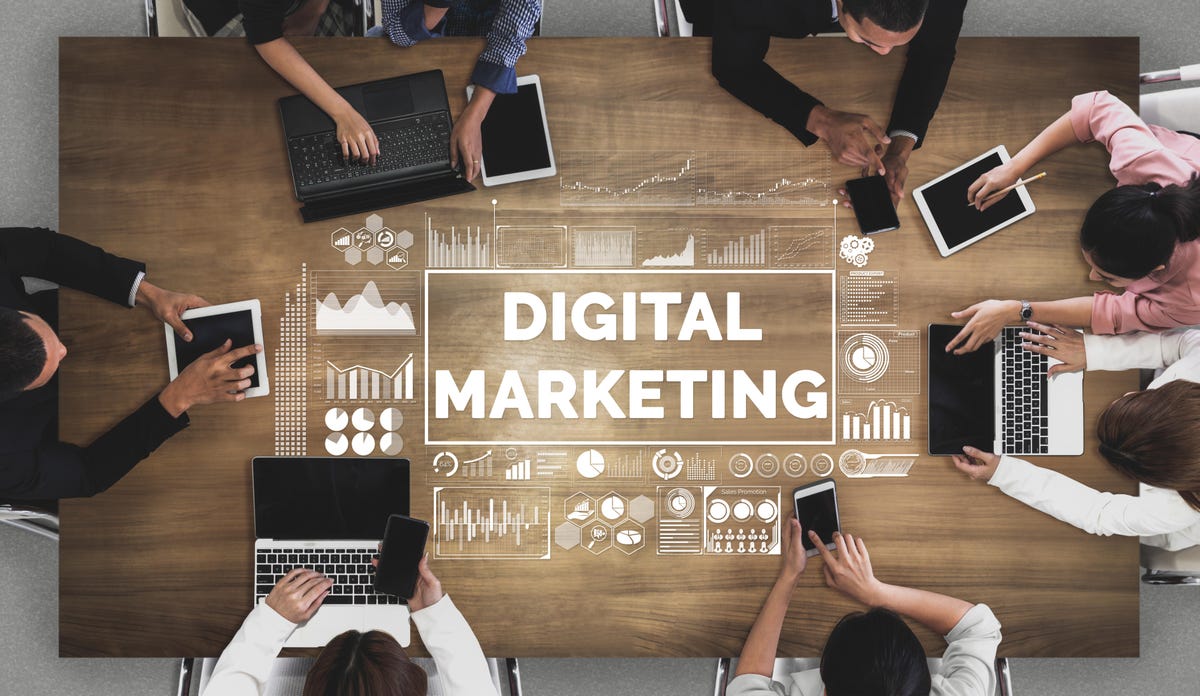The Role of Digital Media in Modern PR Strategies

In today’s digital age, the landscape of Public Relations (PR) has evolved dramatically. Digital media has revolutionized the way organizations communicate, manage their reputations, and engage with their audiences.
This comprehensive article explores the role of digital media in modern PR strategies, focusing on its impact, advantages, and best practices for effective implementation. Impact Authority PR Agency plays pivotal roles in this evolving landscape.
Understanding Digital Media in PR
Digital media encompasses a broad range of online platforms and technologies that facilitate communication, marketing, and public relations. These platforms include social media, blogs, websites, email newsletters, podcasts, and video content.
The rise of digital media has fundamentally transformed the PR industry by providing new avenues for storytelling, audience engagement, and reputation management.
Key Components of Digital Media in PR
- Social Media: Platforms like Facebook, Twitter, Instagram, LinkedIn, and TikTok enable PR professionals to reach vast audiences, engage in real-time conversations, and disseminate content quickly and efficiently.
- Content Marketing: Creating valuable, relevant content such as blog posts, articles, infographics, and videos helps build brand authority and trust.
- Email Marketing: Email newsletters and campaigns are effective tools for maintaining direct communication with stakeholders and promoting news and updates.
- Search Engine Optimization (SEO): Optimizing online content to rank higher in search engine results increases visibility and drives organic traffic to websites.
- Influencer Marketing: Collaborating with influencers who have a significant following can amplify a brand’s message and reach new audiences.
The Evolution of PR: From Traditional to Digital
The transition from traditional PR to digital PR has been driven by technological advancements and changing consumer behaviors.
Traditional PR methods, such as press releases, media kits, and press conferences, are still relevant but have been complemented and, in some cases, overshadowed by digital tactics.
Traditional PR vs. Digital PR
- Traditional PR: Involves tactics like press releases, media relations, event management, and print media outreach. These methods rely heavily on established media outlets and face-to-face interactions.
- Digital PR: Focuses on online channels and strategies, including social media campaigns, content marketing, influencer partnerships, and online reputation management. Digital PR leverages the internet’s reach and speed to communicate with a broader audience more efficiently.
Advantages of Digital Media in PR
Digital media offers numerous advantages that have transformed the PR industry. These benefits make digital media an indispensable part of modern PR strategies.
— Real-Time Communication
One of the most significant advantages of digital media is the ability to communicate in real-time. Social media platforms and online news sites allow PR professionals to respond to events and crises instantly, ensuring that accurate information is disseminated quickly.
— Broader Reach
Digital media platforms enable organizations to reach a global audience without the geographical limitations associated with traditional media. This broader reach allows brands to connect with diverse audiences and expand their influence.
— Enhanced Engagement
Digital media fosters two-way communication, allowing PR professionals to engage directly with their audience. Social media interactions, comments on blog posts, and responses to email newsletters create opportunities for meaningful dialogue and relationship building.
— Measurable Results
Digital media provides robust analytics and measurement tools that help PR professionals track the effectiveness of their campaigns. Metrics such as engagement rates, website traffic, social media mentions, and conversion rates offer valuable insights into campaign performance and areas for improvement.
— Cost-Effectiveness
Compared to traditional PR methods, digital media campaigns are often more cost-effective. Online platforms and tools allow for targeted advertising, reducing waste and ensuring that resources are used efficiently.
Implementing Digital Media in PR Strategies
To maximize the benefits of digital media in PR, it’s essential to implement strategic approaches that align with organizational goals and audience preferences.
— Developing a Digital PR Strategy
A successful digital PR strategy begins with a clear understanding of the organization’s objectives and target audience. Key steps include:
- Setting Goals: Define specific, measurable goals for the digital PR campaign. These goals should align with the overall business objectives and address key performance indicators (KPIs) such as brand awareness, engagement, and lead generation.
- Identifying Target Audience: Conduct audience research to understand the demographics, preferences, and online behavior of the target audience. This information will guide content creation and platform selection.
- Choosing the Right Platforms: Select digital media platforms that best suit the target audience and campaign goals. Focus on platforms where the audience is most active and engaged.
- Creating Compelling Content: Develop high-quality, engaging content that resonates with the audience. Content should be informative, entertaining, and aligned with the brand’s messaging and values.
- Engaging with Influencers: Identify and collaborate with influencers who can amplify the brand’s message and reach new audiences. Influencers should align with the brand’s values and have a genuine connection with their followers.
- Monitoring and Measuring Performance: Use analytics tools to track the performance of digital PR campaigns. Regularly review metrics and adjust strategies based on the data to optimize results.
The Role of Social Media in PR
Social media has become a cornerstone of digital PR strategies. Its interactive nature and widespread use make it an ideal platform for engaging with audiences and managing public perception.
— Building Brand Presence
Maintaining an active presence on social media platforms helps build brand awareness and credibility. Consistent posting, engaging content, and interaction with followers contribute to a positive brand image.
— Crisis Management
Social media plays a crucial role in crisis management by allowing organizations to address issues promptly and transparently. Rapid response to negative events can help mitigate damage and maintain public trust.
— Influencer Collaborations
Partnering with influencers on social media can significantly enhance the reach and impact of PR campaigns. Influencers can introduce the brand to new audiences and lend authenticity to the messaging.
— Community Engagement
Social media enables direct engagement with the community, fostering loyalty and trust. Responding to comments, hosting live sessions, and participating in conversations show that the brand values its audience’s input and feedback.
Content Marketing and SEO in Digital PR
Content marketing and SEO are integral components of digital PR, working together to enhance online visibility and authority.
— Creating Valuable Content
High-quality content that provides value to the audience is essential for successful content marketing. This content can take various forms, including blog posts, articles, videos, infographics, and podcasts.
The goal is to inform, entertain, and engage the audience while aligning with the brand’s messaging.
— Optimizing for Search Engines
SEO involves optimizing content to rank higher in search engine results pages (SERPs). Key SEO practices include:
- Keyword Research: Identify relevant keywords that the target audience is searching for. Incorporate these keywords naturally into the content to improve visibility.
- On-Page SEO: Optimize on-page elements such as titles, headings, meta descriptions, and images to enhance search engine rankings.
- Backlink Building: Acquire high-quality backlinks from reputable websites to boost the content’s authority and credibility.
- User Experience: Ensure that the website is user-friendly, mobile-responsive, and has fast loading times to improve search engine rankings and user satisfaction.
— Leveraging Content Distribution
Distributing content across various digital media platforms helps increase its reach and impact. Sharing content on social media, email newsletters, and relevant online communities amplifies its visibility and engagement.
Email Marketing in Digital PR
Email marketing remains a powerful tool in digital PR strategies. It allows for direct, personalized communication with stakeholders and helps nurture relationships over time.
— Building an Email List
Creating a high-quality email list is the first step in effective email marketing. Use sign-up forms, lead magnets, and incentives to encourage website visitors and social media followers to subscribe.
— Crafting Engaging Newsletters
Well-designed email newsletters keep the audience informed and engaged. They should feature valuable content, updates, and calls-to-action that encourage interaction. Personalization and segmentation based on audience preferences can enhance relevance and engagement.
— Measuring Email Campaign Success
Track key email marketing metrics such as open rates, click-through rates, and conversion rates to evaluate the effectiveness of email campaigns. Use this data to refine content and strategies for better results.
The Power of Influencer Marketing in Digital PR
Influencer marketing leverages the credibility and reach of influencers to promote a brand’s message. When executed effectively, it can significantly enhance the impact of PR campaigns.
— Identifying the Right Influencers
Choose influencers who align with the brand’s values and have a genuine connection with their followers. Consider factors such as audience demographics, engagement rates, and content relevance.
— Building Authentic Relationships
Develop authentic relationships with influencers by engaging with their content, offering value, and fostering mutual respect. Long-term partnerships tend to yield better results than one-off collaborations.
— Measuring Influencer Campaign Success
Evaluate the success of influencer marketing campaigns by tracking metrics such as reach, engagement, and conversions. Analyze the impact on brand awareness, sentiment, and sales to determine the campaign’s effectiveness.
Online Reputation Management in Digital PR
Maintaining a positive online reputation is critical for any organization. Digital media plays a crucial role in managing and protecting a brand’s reputation.
— Monitoring Online Presence
Regularly monitor online mentions, reviews, and comments to stay informed about public perception. Use tools like Google Alerts, social media listening platforms, and review sites to track mentions and sentiment.
— Addressing Negative Feedback
Respond to negative feedback promptly and professionally. Acknowledge concerns, offer solutions, and demonstrate a commitment to resolving issues. Transparency and responsiveness can help mitigate damage and restore trust.
— Promoting Positive Stories
Highlight positive stories, testimonials, and reviews to reinforce the brand’s positive image. Share success stories, customer experiences, and community involvement to build credibility and trust.
Best Practices for Digital Media in PR
To maximize the benefits of digital media in PR, it’s essential to follow best practices that ensure effective communication, engagement, and reputation management.
— Develop a Comprehensive Strategy
Create a comprehensive digital PR strategy that aligns with the organization’s goals and objectives. This strategy should encompass content creation, social media engagement, influencer partnerships, SEO, and email marketing.
— Stay Informed and Adapt
Stay informed about the latest trends, technologies, and best practices in digital media and PR. Be prepared to adapt strategies based on emerging trends and audience preferences.
— Foster Authentic Relationships
Build authentic relationships with influencers, customers, and stakeholders. Genuine interactions and transparent communication foster trust and loyalty.
— Measure and Analyze
Regularly measure and analyze the performance of digital PR campaigns. Use data-driven insights to refine strategies, optimize content, and improve results.
— Maintain Consistency
Consistency in messaging, branding, and engagement is key to building a strong and recognizable online presence. Ensure that all digital media efforts align with the brand’s identity and values.
Conclusion: The Future of Digital Media in PR
The role of digital media in modern PR strategies is undeniable. As technology continues to evolve, digital media will play an increasingly critical role in shaping public perception, managing reputations, and engaging with audiences.
By embracing digital media and following best practices, PR professionals can navigate the complexities of the digital landscape and achieve impactful results.












